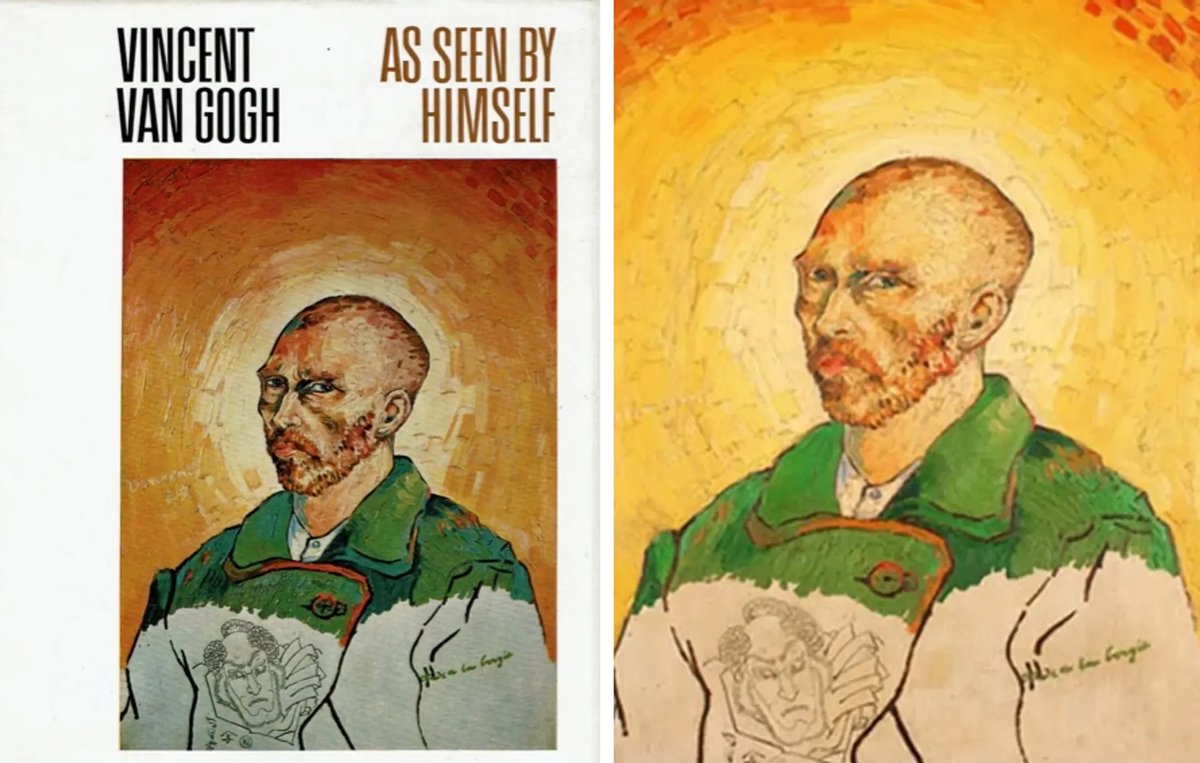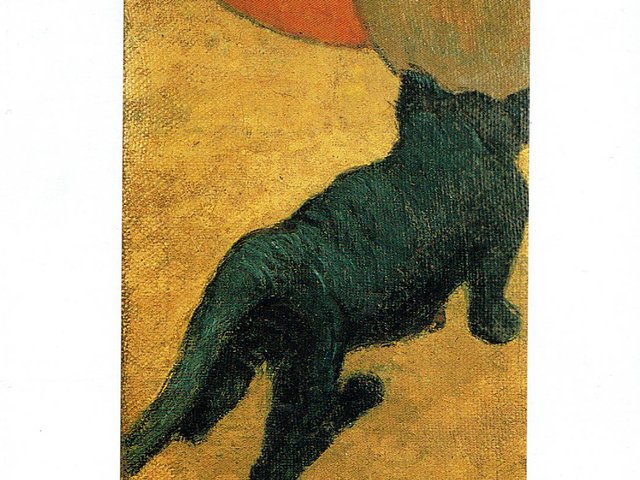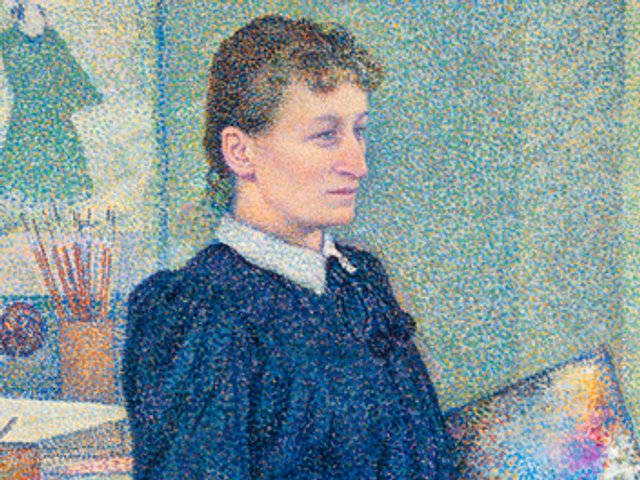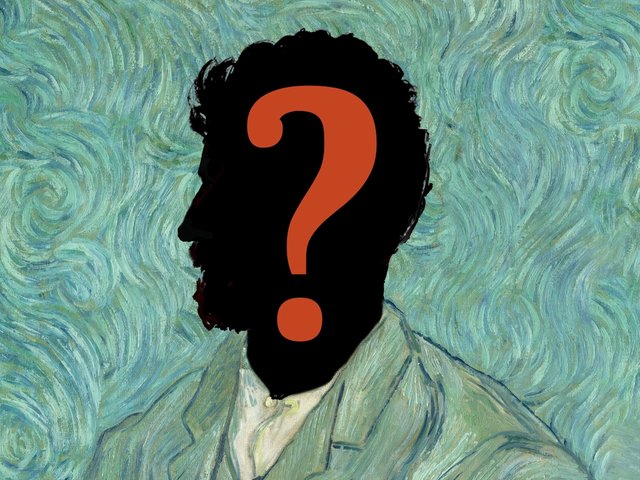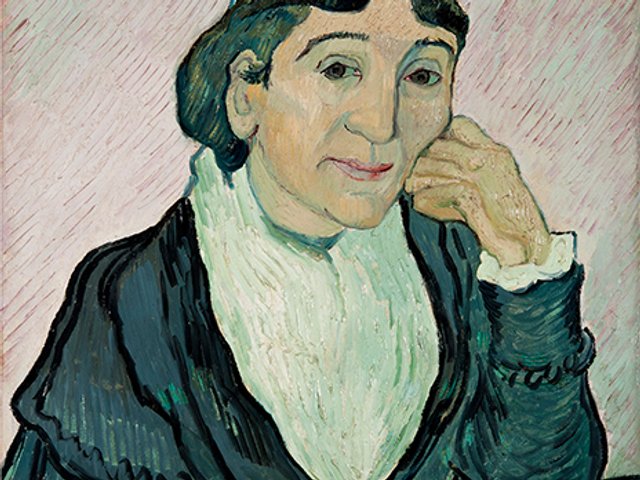A Van Gogh self-portrait makes an ideal cover for many books on the painter. It not only illustrates the art, but also the artist. But unfortunately even mainstream publishers and their eminent specialist writers have occasionally been deceived into choosing a misleading image: at least four fake self-portraits have made it onto book covers.
Lust for Life

Cover of Irving’s Stone’s Lust for Life (1934) and the fake “self-portrait” (1920s) Grosset & Dunlap, New York and National Gallery of Art, Washington, DC
Lust for Life, the best-selling novel by Irving Stone, shaped the way that Van Gogh has been perceived since its publication in 1934. It has been reprinted many hundreds of times and widely translated into dozens of languages. Ninety years later, it is still in print all over the world.
One of the earliest editions, published in New York in 1934, reproduced a “self-portrait” depicting the artist at his easel. This painting had first appeared in 1928 at Berlin's Wacker gallery (which was later exposed for handling numerous other Van Gogh fakes) and was quickly sold for $31,500 to the American banker Chester Dale, who in 1963 bequeathed it to the National Gallery of Art in Washington, DC.
By the 1950s the Dale self-portrait had been rejected by most specialists and in the 1970 Van Gogh catalogue raisonné by Jacob-Baart de la Faille it was excluded from the oeuvre. However, the National Gallery of Art continued to claim it to be authentic, presumably not wishing to offend the donor’s family.
In 1984 the self-portrait was finally downgraded by the gallery to that of an “imitator”. Since then it has been banished to the vaults. Fortunately its appearance on the cover of Lust for Life was brief and copies of the book displaying the fake are now scarce.
Tragic Life
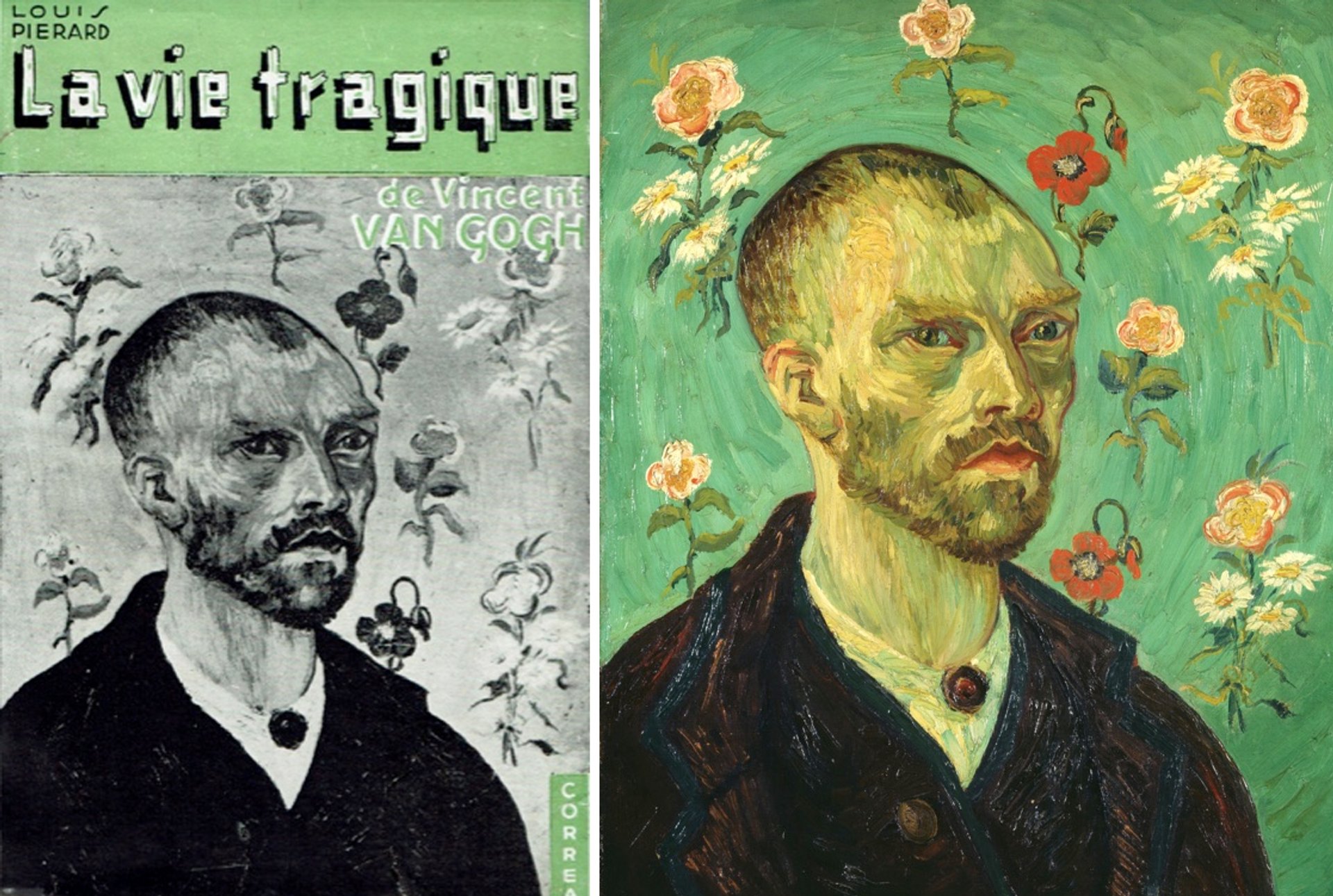
Cover of Louis Piérard’s La Vie tragique de Vincent van Gogh (1946) and Judith Gérard’s reworked copy (1897 and later) after Van Gogh’s Self-portrait dedicated to Paul Gauguin
Editions Correa, Paris and Foundation E.G. Bührle Collection, Kunsthaus Zurich
A respected biography of Van Gogh by the Belgian writer Louis Piérard was first published in 1924. When it was reprinted in 1946 a fake self-portrait was used on the cover. This painting has had a most unusual story.
In 1898 an early admirer of Van Gogh’s work, the artist Judith Gérard, painted a copy of the authentic Self-portrait dedicated to Paul Gauguin (September 1888), the original of which is now at the Fogg Museum, part of Harvard Art Museums. Gérard created her version out of admiration, not with any intention to deceive.
In 1902 the painting changed hands and it was then modified by someone else, probably the French artist Emile Schuffenecker, who overpainted her signature and added the floral background. It was later deceitfully marketed as a Van Gogh.
The painting was bought in 1911 by a distinguished Berlin collector, Paul von Mendelssohn-Bartholdy, and many years later it was acquired by the Swiss arms manufacturer Emil Bührle. It is now part of his foundation’s collection, which is on long-term loan to the Kunsthaus Zurich.
Although Gérard had published her story about the deceit in 1931, this attracted little attention and the painting continued to be widely assumed to be authentic. It was provisionally accepted in the 1939 edition of the authoritative de la Faille catalogue raisonné. However, by the 1950s it was increasingly rejected by specialists and it was excluded from the 1970 edition of the catalogue.
Unusually for a fake, the reworked Gérard painting is currently on display in a museum, the Kunsthaus Zurich—but clearly labelled as a “copy after Van Gogh” which had been “reworked with fraudulent intent”.
The fake self-portrait also briefly featured on another book cover. Phaidon, one of the UK’s leading art publishers, used it on its 1947 edition of Vincent van Gogh: Paintings and Drawings. This book was introduced by the respected Austrian art historian Ludwig Goldscheider and his German colleague Wilhelm Uhde.
By Himself

Cover of Heinz Lieser’s Vincent van Gogh: As seen by himself (1963) and the fake “self-portrait” (probably mid 1940s)
Bayer Leverkusen and private collection
This is the most bizarre of the four fake Van Gogh self-portraits. It was used on the cover of Heinz Lieser’s book Vincent van Gogh by Himself, which was published in 1964 by the Bayer Leverkusen pharmaceutical company. Devoted to self-portraits, the book has 17 illustrations of authentic works, although the author’s credentials are damaged by the cover image.
The cover shows an apparent self-portrait of Van Gogh, with the lower quarter of the painting only partly finished. In the lower area there is what appears to be a line drawing of a Japanese actor and the inscription “etude a la bougie” (candlelight study). The yellow-orange background is intended to suggest that it was painted at night by candlelight. The image of the artist’s head is loosely based on the Fogg Museum’s Self-portrait dedicated to Paul Gauguin, although shown in reverse.
This self-portrait with a Japanese motif is said to have been discovered in a Paris cafe in 1948. The following year it was bought by the celebrated Hollywood producer William Goetz. He paid $50,000, a substantial sum at the time.
Very soon after the sale the painting was rejected by some specialists and by the late 1950s it had little support. It was excluded from the 1970 de la Faille catalogue raisonné. Now universally rejected, the picture apparently remains with the Goetz heirs.
Lost Arles Sketchbook
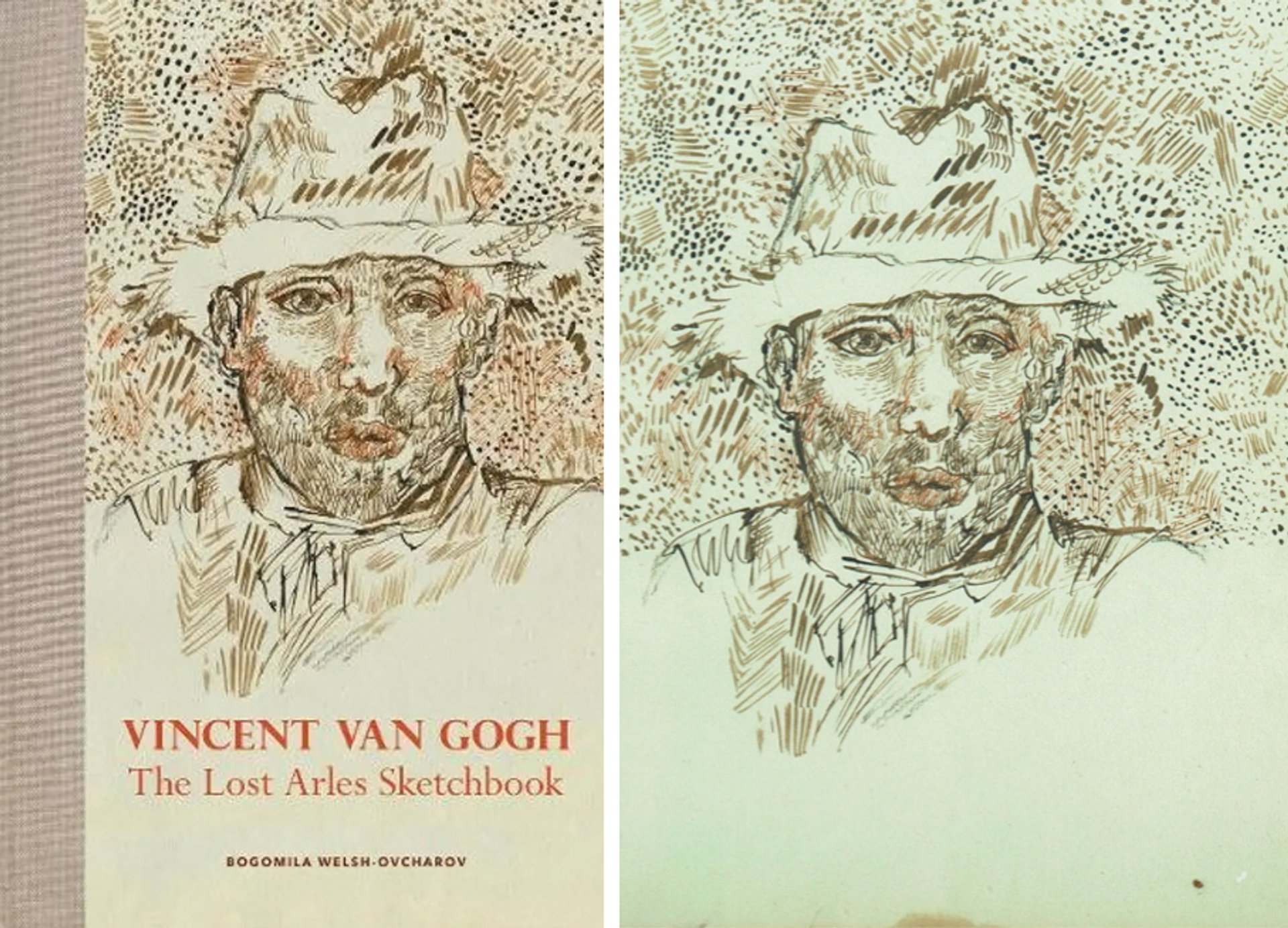
Cover of Bogomila Welsh-Ovcharov’s Vincent van Gogh: The Lost Arles Sketchbook (2016) and the fake “self-portrait” drawing (unknown date) Abrams, New York and unknown private collection
As recently as 2016 a fake self-portrait appeared on the cover of Vincent van Gogh: The Lost Arles Sketchbook, published by the respected Abrams imprint. The author is the noted Canadian specialist Bogomila Welsh-Ovcharov and the foreword is by the then doyen of Van Gogh studies, the late Ronald Pickvance from the UK. The large-format book was released in English, as well as in French, Dutch and German.
Welsh-Ovcharov wrote that 65 previously unknown drawings came from a disbound sketchbook used by Van Gogh from May 1888, soon after his arrival in Arles, up until shortly before he left to enter the asylum at Saint-Rémy-de-Provence a year later. The drawings are a mixture of landscapes and portraits—including one self-portrait, which was reproduced on the cover.
The book dates the self-portrait drawing in ink to July-August 1888. Welsh-Ovcharov writes that “the artist, wearing his trademark worker’s smock and iconic straw hat, renders his own features and unshaved stubble with great spontaneity”.
The problem is that the entire sketchbook is a fake, as was concluded by the Van Gogh Museum and reported in a detailed statement.
The “lost Arles sketchbook” is a salutary warning to publishers: take care with any newly discovered Van Goghs that miraculously appear.


